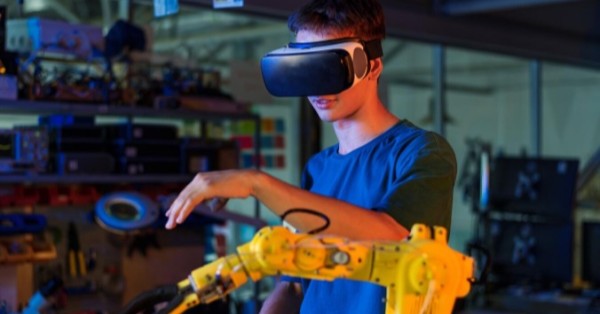NVIDIA and AMD are preparing to release new AI-focused GPUs in China by July 2025. These chips are being specifically designed to comply with the latest U.S. export regulations, which limit the sale of advanced semiconductor technology to China. The move is an effort to maintain access to a vital market while staying within the bounds of Washington’s evolving trade policies.
The news, reported by Taiwanese tech outlet Digitimes and corroborated by recent updates from Reuters, confirms that both chipmakers are developing adjusted versions of their AI products to meet the regulatory thresholds.
NVIDIA and AMD Launch AI Chips in China for July 2025 Market Entry
According to supply chain sources, NVIDIA plans to introduce a scaled-down AI chip, internally code-named “B20.” This GPU is crafted to deliver AI computing capabilities while remaining under the performance limits imposed by U.S. export controls. The B20 follows the same design logic as other NVIDIA chips built for machine learning, inference, and data-intensive workloads—but with parameters that sidestep export bans.
Meanwhile, AMD is preparing to launch the Radeon AI PRO R9700, a workstation-class GPU tailored for AI workloads. The chip will serve enterprise and commercial clients in China who need capable AI performance without violating U.S. restrictions.
NVIDIA Launches Budget AI Chip with Blackwell Architecture for China
In addition to the B20, NVIDIA is developing another AI chip based on its latest Blackwell architecture. The upcoming chip is expected to be priced between $6,500 and $8,000, offering a lower-cost alternative to NVIDIA’s higher-end H20 GPUs, which typically retail between $10,000 and $12,000.
This pricing strategy shows how NVIDIA is reshaping its portfolio to remain competitive in regulated markets. The Blackwell-based chip will appeal to Chinese firms seeking AI acceleration solutions within legal export boundaries.
How Export Rules Affect NVIDIA as It Launches AI Chips in China
The decision to roll out new chips comes after significant financial losses for NVIDIA. In Q1 2025, the company recorded a $4.5 billion charge directly tied to licensing restrictions that blocked H20 chip sales to Chinese customers. An additional $2.5 billion worth of inventory could not be shipped during the same period due to regulatory delays.
Looking forward, NVIDIA has projected a potential $8 billion hit to its revenue in Q2 2025 if the licensing constraints continue to stall shipments. These numbers underscore the substantial toll U.S. policies are taking on AI hardware vendors with major exposure to the Chinese market.
Adaptation Strategy Amid Tightening U.S.–China Tech Tensions
Despite these setbacks, both NVIDIA and AMD are adjusting their product strategies to remain viable players in China’s AI ecosystem. The development of new GPUs that fall below U.S.-imposed thresholds illustrates a tactical response to ongoing trade friction.
Rather than exit the market, these chipmakers are building compliant hardware that can support AI applications such as machine learning, data analytics, and automation, albeit with performance caps.
This approach helps them stay competitive in one of the world’s largest and fastest-growing AI markets, where demand for AI compute is still high despite geopolitical challenges.
Implications for China’s AI and Semiconductor Ecosystem
For Chinese tech companies, the release of these adjusted chips provides a path forward. While not as powerful as unrestricted products like the H100 or MI300, the new GPUs still offer meaningful capabilities for a range of enterprise and industrial AI tasks. This ensures ongoing progress in sectors such as smart manufacturing, retail, healthcare, and financial services.
Access to legal, AI-capable GPUs helps Chinese firms navigate trade regulations while continuing to build and scale AI platforms. From autonomous systems to digital services, the demand for AI compute power shows no sign of slowing, and chipmakers are working to deliver options that meet that demand within legal limits.
Are NVIDIA and AMD Launches Setting a New Standard for Compliant AI Chips?
The release of the B20 and Radeon AI PRO R9700 may signal a broader trend for the semiconductor industry. In a world where geopolitical dynamics increasingly shape market access, chipmakers might standardize the development of tiered product lines, offering compliant variants for restricted markets.
As U.S.–China tech tensions continue, we may see more AI chips launched under similar compliance strategies. This allows global semiconductor players to sustain revenue while respecting policy frameworks and reducing the risk of regulatory penalties.
NVIDIA and AMD Launch AI Chips: A Blueprint for Compliance-Driven Innovation
The upcoming AI GPU launches from NVIDIA and AMD mark a calculated move to balance innovation, compliance, and market demand. By introducing legally exportable AI chips tailored for China, these companies are not just responding to restrictions—they’re reshaping their business models to ensure long-term presence in a key region.
As July approaches, all eyes will be on the rollout of these new GPUs and how Chinese enterprises adopt them. In the evolving AI chip landscape, regulatory agility may prove just as important as raw processing power.





























